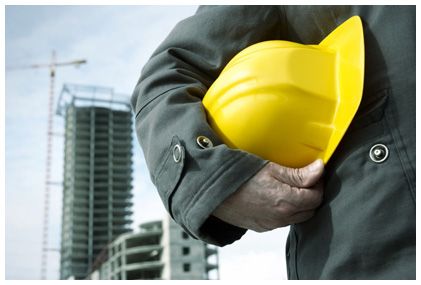 Construction PPIs are calm in May; building suppliers signal rises but metal prices slip
Construction PPIs are calm in May; building suppliers signal rises but metal prices slip
Editor’s note: Construction Citizen is proud to partner with AGC America to bring you AGC Chief Economist Ken Simonson's Data DIGest. Check back each week to get Ken's expert analysis of what's happening in our industry.
Click here to view the May PPI tables.
The producer price index (PPI) for finished goods climbed 0.5%, not seasonally adjusted (and seasonally adjusted), in May and 1.7% over 12 months, the Bureau of Labor Statistics (BLS) reported today. The PPI for inputs to construction—a weighted average of the cost of all materials used in construction plus items consumed by contractors such as diesel fuel—was flat for the month and rose just 0.8% year-over-year. The PPI for residential construction inputs was unchanged in May and up 1.6% from a year earlier, while inputs for nonresidential construction inched up 0.2% and 0.3%, respectively. The largest year-over-year price increases among major construction inputs were for gypsum products (0.5% in May and 19% over 12 months) and lumber and plywood (-3.3% and 13%, respectively). The largest downward annual price changes were for steel mill products (-1.3% and -9.5%), copper and brass mill shapes (-2.9% and -7.4%) and diesel fuel (-3.4% and -5.5%). Indexes for most new nonresidential building construction and subcontractors’ work rose modestly. The PPI for new schools was flat in May and up 0.4% from a year ago; offices, 0.3% and 1.1%; industrial buildings, 0% and 1.5%; warehouses, 0.7% and 2.7%; and the index for new health care buildings was unchanged since April and up 0.5% since June 2012, when it was introduced. The PPI for new, repair and maintenance work on nonresidential buildings by electrical contractors rose 0.1% in May and 0.2% over 12 months. The indexes for concrete and plumbing contractors were both flat in May and up 1.3% from a year ago. The PPI for roofing contractors rose 0.8% and 2.7%, respectively.
More price increases appear to be in the offing for materials used in building construction. Thompson Research Group reported on Monday that its May survey of building products suppliers showed: “Steel stud pricing down sequentially due to falling raw material prices. A 10% price increase was announced for July. Wallboard… industry maintaining support for the 25%-30% price increase in 2013. May wallboard pricing flattish sequentially. [May insulation] pricing up sequentially. CertainTeed announced a June 10%-15% price increase and supply now on allocation. [May roofing] pricing flat to up sequentially. Industry support for May price increase. Tamko announced a 7% price increase for July, the third in 2013. [May flooring] pricing was up sequentially…. Industry supported March 3%-8% carpet price increase and early support for June 10% hardwood flooring price increase. A 5%-7% hardwood flooring price increase was announced for July/August. [May lighting pricing was] up sequentially.” In contrast, steel, copper and diesel prices stayed flat or dipped since mid-May. For instance, “U.S. domestic [steel] plate spot prices have continued their descent this week, fueled by a demand slowdown and import competition,” SteelOrbis Bulletin reported today.
The Dodge Momentum Index rose 3.6% in May from the previous month, McGraw Hill Construction reported on June 7. “The Momentum Index is a monthly measure of the first (or initial) report for nonresidential building projects in planning, which have been shown to lead construction spending for nonresidential buildings by a full year. The Momentum Index has risen for six consecutive months, the longest period of increases since 2006. The index… is up 36% since May of 2012. The uncertainty surrounding new development appears, for now, to have dissipated, and the climate for nonresidential building projects is gaining strength as the planning pipeline grows more active. In contrast to prior months, the May advance for the Momentum Index was largely the result of a strong upturn by its institutional segment. New plans for institutional buildings rose 10.2% in May, bolstered by plans for several college and hospital-related projects…. Meanwhile, the commercial segment took a pause in May, receding 1.6% from April. A dip in office-related planning projects weighed on the commercial component of the index, while retail development continued to gain strength.”
Contract settlements with construction unions from January to early June had an average first-year increase of 2.2% or $1.04, compared with 2.0% or $0.88 in 2012, according to a new analysis by the Construction Labor Research Council. As in 2012, about 14% of settlements had a decrease or no change in the first year.
ManpowerGroup reported on Tuesday that 26% of the construction employers it surveyed expect to increase employment by the end of September compared with the end of June, versus only 8% that expect to decrease employment. Both the percentage expecting increases and the net (18%) are among the most optimistic of 13 sectors the company reported, and the net is a considerable jump from the net reading of 10% three months ago.
Industrial production (IP) in manufacturing inched up 0.1% in May and 1.7% over 12 months, the Federal Reserve reported today. IP of construction supplies slipped for the third straight month, falling 0.2% in May, and rose 2.6% over the past year. Capacity utilization in manufacturing was unchanged in May from April and from May 2012 at 75.8% of capacity, well below the 1972-2012 average of 78.7%. Weak IP gains and ample capacity are negative indicators for demand for factory construction.
The Data DIGest is a weekly summary of economic news; items most relevant to construction are in italics. All rights reserved. Sign up at www.agc.org/datadigest.



Add new comment